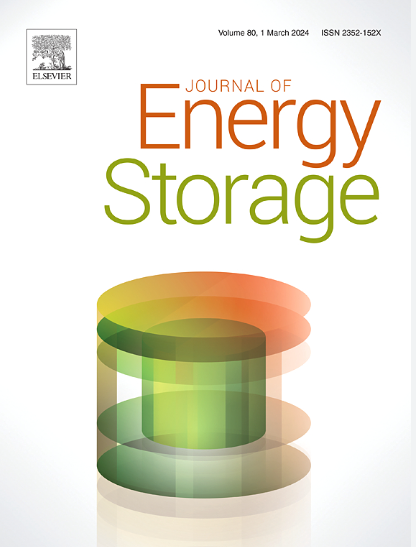锂离子电池热失控模型的发展:热源模型、热力学框架和微动力学方法综述
IF 8.9
2区 工程技术
Q1 ENERGY & FUELS
引用次数: 0
摘要
用于模拟锂离子电池热滥用过程中放热化学反应的热源模型已被广泛用于评估锂离子电池的安全性,该模型可以预测锂离子电池的温度上升、传热、压力积累和点火行为。这些传统模型在预测热失控(TR)的初始阶段、局限性和扩展方面取得了重大进展。然而,这些模型有一些缺点。最初,这些模型是材料特异性的,假设击穿产物是先验的,无法预测~450 K以上的快速热释放。此外,热滥用子模型(如排气和燃烧模型)的准确性取决于分解模型预测温度和气体演化的能力。这一综述为参与开发lib的TR模型的研究人员提供了有价值的指导。通过强调现有模型的局限性和提出创新的方法,它为推进该领域的最新技术提供了路线图。本文讨论了改进的传统模型和新方法,改进和扩展了TR过程中放热反应的先前模型。一般来说,有两种主要方法:采用经验方程的传统建模和包括热力学和微动力学方法在内的创新方法,用于模拟通常称为放热反应的热滥用。微动力学建模通过预测可燃气体的产生来提高建模技能,而热力学模型可以用于定量量化各种失效条件下的热量产生,包括锂离子电池和固态电池。强调微动力学和热力学建模技术的集成对于提高预测精度和实现对失效机制的更全面理解至关重要,特别是在大规模应用中。本文章由计算机程序翻译,如有差异,请以英文原文为准。
Advancing thermal runaway modeling in lithium-ion batteries: A review of heat source models, thermodynamic frameworks, and microkinetic approaches
Heat sources models for modeling exothermic chemical reactions during thermal abuse in lithium-ion batteries (LIBs) have become widely used to assess the safety of LIBs by predicting rises in temperature and heat transfer, as well as pressure accumulation and ignition behavior. These Conventional models have progressed significantly in terms of forecasting the initial stages, limitations, and spread of the thermal runaway (TR). However, these models have some drawbacks. Originally, these models were material-specific, assumed breakdown products a priori and failed to forecast rapid heat release above ~450 K. Additionally, the accuracy of sub-models of thermal abuse, such as venting and combustion models, is dependent on decomposition models' ability to predict temperature and gas evolution. This review provides valuable guidance for researchers involved in the development of TR models for LIBs. By highlighting the limitations of existing models and presenting innovative approaches, it offers a roadmap for advancing the state-of-the-art in this field. This review discusses upgraded traditional models and novel approaches that refine and extend prior models for exothermic reactions during TR. In general, there are two primary approaches: legacy modeling employing empirical equations and innovative approaches including thermodynamic and microkinetic approaches, for modeling thermal abuse often known as exothermic reactions. Micro-kinetic modeling enhances modeling skills by predicting flammable gas generation while Thermodynamic models can be employed to quantitatively quantify heat production under a variety of failure conditions, including Li-ion batteries, and solid-state batteries. Emphasizing the integration of micro-kinetic and thermodynamic modeling techniques is vital to enhance predictive accuracy and achieve a more comprehensive understanding of failure mechanisms particularly at large scale applications.
求助全文
通过发布文献求助,成功后即可免费获取论文全文。
去求助
来源期刊

Journal of energy storage
Energy-Renewable Energy, Sustainability and the Environment
CiteScore
11.80
自引率
24.50%
发文量
2262
审稿时长
69 days
期刊介绍:
Journal of energy storage focusses on all aspects of energy storage, in particular systems integration, electric grid integration, modelling and analysis, novel energy storage technologies, sizing and management strategies, business models for operation of storage systems and energy storage developments worldwide.
 求助内容:
求助内容: 应助结果提醒方式:
应助结果提醒方式:


